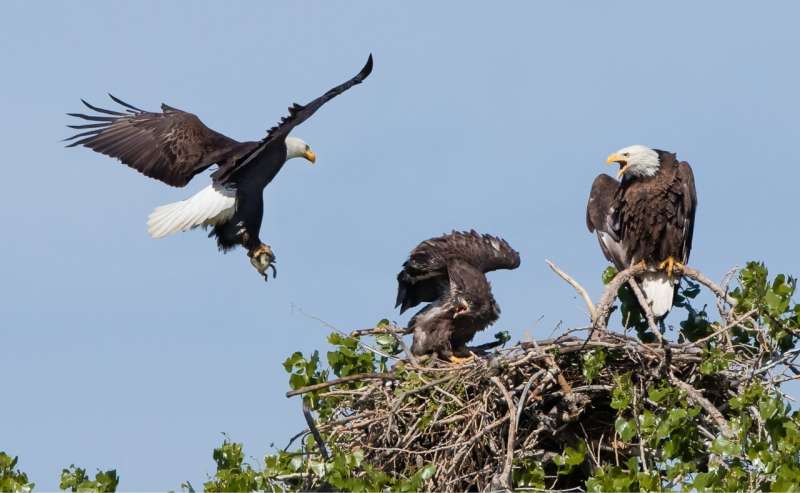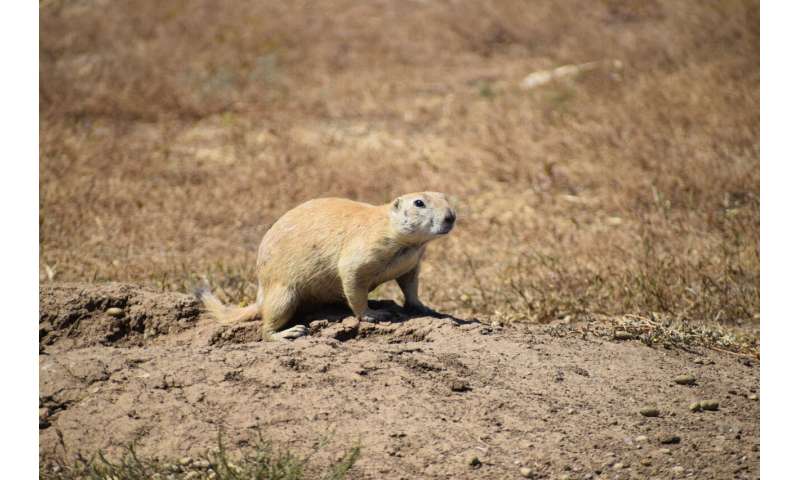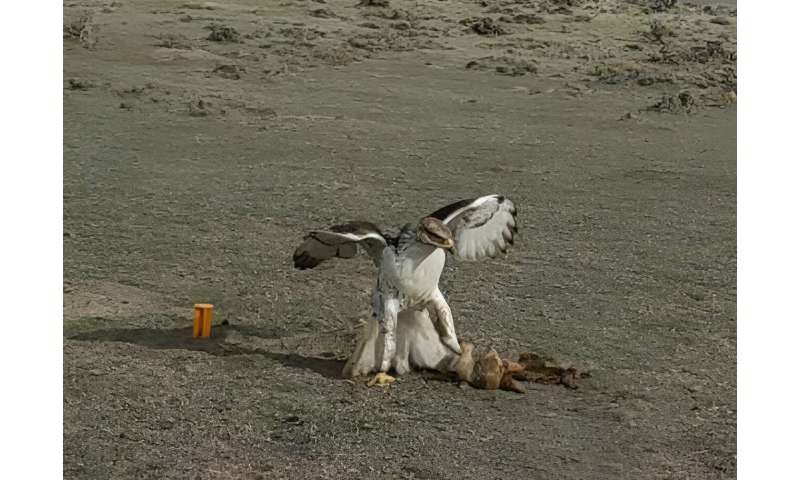This article has been reviewed according to Science X's editorial process and policies. Editors have highlighted the following attributes while ensuring the content's credibility:
fact-checked
proofread
Bald eagles eat prairie dogs? Researchers underscore relationship between raptors and rodents in the Great Plains

We all know that bald eagles like fish. Few of us, however, picture them soaring over grasslands seeking out prairie dog snacks. In a paper published in the Journal of Raptor Research, lead author Courtney Duchardt and co-authors make the case that prairie dogs are an important resource for at least four species of raptors overwintering in the Southern Great Plains, bald eagles included.
Their paper, titled "Overwintering Raptor Abundance and Community Composition in Relation to Prairie Dog Colonies in the Southern Great Plains," explains the first broad-scale look into the relationship between prairie dogs and their aerial predators, and illuminates an important trophic interaction with implications for raptor conservation through the lens of climate change.
Grasslands across North America have shrunk significantly since the 1970s, and for those remaining, habitat quality is a far cry from what it used to be. Since the '90s, the total population of grassland birds across North America has decreased by 53%, illustrating the link between grassland health and bird abundance. Grassland raptors, with their large spatial requirements, likely suffer graver consequences from these reductions in habitat quality than other birds.
Duchardt, from the Department of Natural Resource Ecology and Management at Oklahoma State University, and her colleagues, provide strong evidence that the stability and predictability of prairie dog colonies provides an important prey source for overwintering raptors across the Southwest Great Plains. Between 1998 and 2002 the research team conducted winter road surveys in Arizona, Colorado, New Mexico, Texas, and the Mexican state of Chihuahua.
Their results were illuminating—nine raptor species occurred in tandem with prairie dog colonies. Notably, bald eagles and rough-legged hawks were included in this pattern, even though they don't often encounter prairie dogs on their breeding grounds. However, as Duchardt points out, "prairie dogs are perfectly sized raptor-snacks," so it makes sense that both species would see them as caloric jackpots.
-

Adult prairie dog on a colony in southwestern Oklahoma. Credit: Courtney Duchardt -

Ferruginous hawk processing a recently killed prairie dog captured on a game camera in the Thunder Basin National Grassland of Wyoming. Credit: Lauren Porensky
Climate change could alter cycles of prairie dog reproduction. Already, variation in climate norms has increased the occurrence of plague among colonial breeding rodents like prairie dogs. If raptors feed on prairie dogs as often as this new study suggests, these shifts in prairie dog availability could push raptors to range further for food.
The further they range, the more often they encounter dangers like wind turbines, which have been shown to negatively affect golden eagles and ferruginous hawks. This is of special concern for juvenile raptor which have a hard enough time during their first year of life without added stressors.
An obvious next step is to prioritize protection of prairie dog colonies in areas where raptors are associating with them as a prey source. However, supporting prairie dogs for the sake of raptor health is politically tricky. "Prairie dogs are contentious and seen as pests in most parts of their range. However, their role as a keystone species helps to demonstrate that, even though there are conflicts, they are important," says Duchardt. "To support raptors wintering in the Southern Plains, we need to consider prairie dog management."
Raptors are bioindicators, meaning they serve as proxies for habitat health, and they play a key part in naturally supporting ecosystem functioning as top predators on the landscape. Even with the reality of human-prairie dog conflict, there are pathways forward. "Ranching can be compatible with diverse wildlife communities because many of the wildlife co-evolved with bison, and sustainable ranching can replicate that," says Duchardt.
Using innovative management tools and educating the public on the importance of prairie dogs and raptors in these regions, Duchardt is optimistic that a middle ground can be found—one that allows bald eagles to munch on prairie dogs for years to come.
More information: Allison Salas et al, Overwintering Raptor Abundance and Community Composition in Relation to Prairie Dog Colonies in the Southern and Central Great Plains, Journal of Raptor Research (2024). DOI: 10.3356/JRR-22-119
Provided by Raptor Research Foundation




















